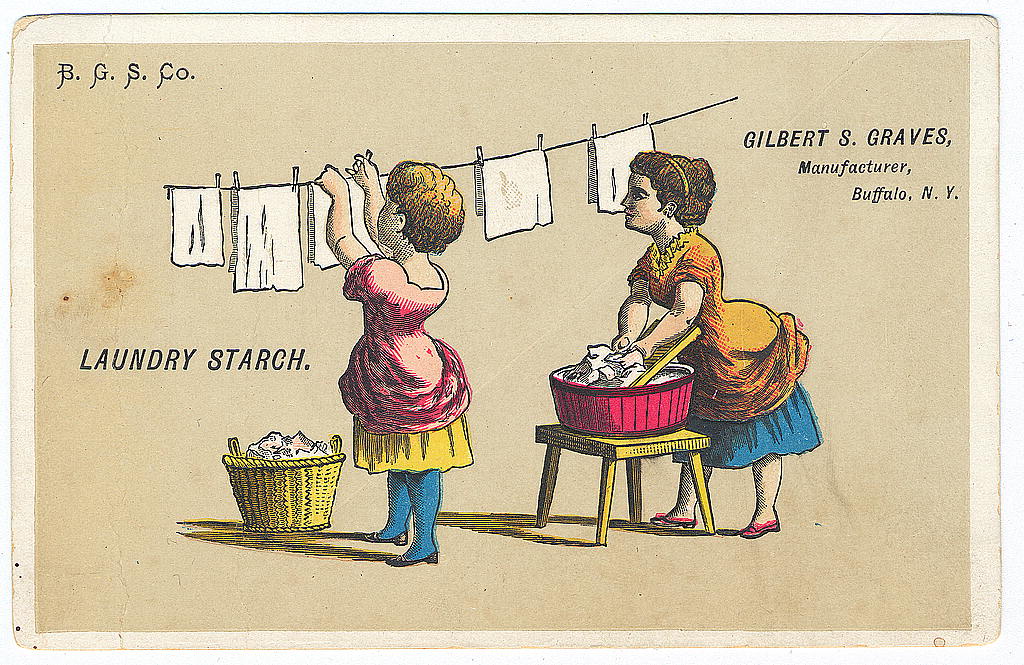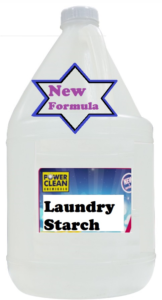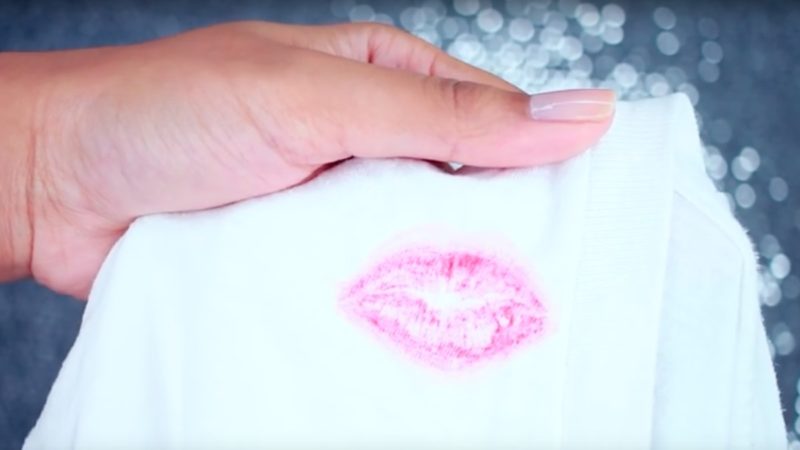HOW TO USE LAUNDRY STARCH AND SIZING

If you love your garments to give a smart, chic, and crisp feel but aren’t able to achieve the desired results through mere ironing, then don’t worry. You have laundry starch and sizing at your rescue.
What is a laundry starch?
Laundry starch is a natural product that can be made from corn, wheat, or rice. It is helpful in adding body to the fabrics and creating soil resistance. It makes the ironing process a lot easier and effective too. You can purchase laundry starch in liquid form, as laundry starch powder, as fabric starch or even in aerosol cans.
You can even easily make it at home too. To get maximum crispness, it is recommended that you use liquid starch so that you can dip the entire garment, and every part of it gets evenly coated with the laundry starch. This works best on linens, cotton blends, or 100% cotton fabrics.
How to use laundry starch?

Laundry starch is applied to the garments after they have been thoroughly washed and are almost dried. If you have bought laundry starch from the market, then the packet will have all the necessary directions that are to be followed for achieving the desired level of crispness.
If the laundry starch is homemade and it’s liquid, then you can use it in two ways.
- For a quick crispness on the garments, simply spray the diluted liquid starch on the damp garment and then iron the garment.
- But you wish to have a super-crisp garment after ironing; then, you may dip the entire garment in the laundry starch solution, allow it to dry, and then iron it.
PRO TIP
Remember to keep the heat of your iron at a mild level and not too hot; else, it may result in scorching.
What is laundry sizing?
Laundry sizing is a resinous solution, and it also adds crispness to the fabrics. This solution can be vegetable-based or petroleum-based. It is commonly used by textile companies in the last stages of the textile manufacturing process.
Laundry sizing solution is commonly available in aerosol or sizing spray bottles. It is especially helpful for fabrics such as polyester or cotton/polyester blends that are man-made fibers. It is however, less effective on cotton and linens, unlike laundry starch.
How to use laundry sizing for ironing?
The process of using sizing is slightly different from that of using laundry starch. With starch, the fabrics are allowed to completely dry after applying starch and then are ironed. But in laundry sizing, you need to use the sizing spray on small areas and follow it with ironing. This will be a parallel process of spraying the sizing solution from a distance of eight to ten inches on the garment and then ironing it.
The iron needs to be set at the recommended heating level for that particular fabric. Also, remember to let the garment cool completely before storing it or wearing it. This is helpful in avoiding excessive wrinkling on these types of fabrics.
What’s the difference between laundry starch and laundry sizing?
Although laundry starch and laundry sizing are both sprayed on the garments to achieve stiffness during the finishing process, and they both can be used alike in the process of dry-cleaning or wet-cleaning, yet there are a couple of differences between the two.
- Laundry starch is primarily used to stiffen the fabrics. It is mainly used, so that shirt collars and cuffs of cotton, cotton-blends, and linen shirts are stiffened. On the other hand, sizing is used to add a body to the garments.
- While laundry starch is a completely natural product and is made from wheat, rice, or corn, sizing is a type of resinous solution and can be both vegetable-based or plastic-based.
- Laundry starch does not work effectively with thermoplastic fibers like polyester and polyester blends. Thus fabric manufacturers resort to sizing as it imparts the desirable level of stiffness on such synthetic fabrics.
- Applying starch in place of sizing will make the garment overly stiff, resulting in increases and wrinkles before and during wear. But applying to size will just add enough body to the fabric so that it looks presentable, and there are fewer wrinkles during the wear.
Uses of starch

Apart from providing crispness to the garments, laundry starch has some other uses also:
- If your pillow cover has caught stains from oily hair or greasy night cream, then applying a little laundry starch on that particular part of the fabric will help remove the stain. Applying more laundry starch, in this case, may lead to an over stiff fabric which may become uncomfortable to use.
- You can apply a drop of laundry starch on the thread to put it in the needle with ease. The slightly stiff end of the thread will go inside the eye of the needle easily.
- You can apply laundry starch on new or cleaned canvas shoes too. This will prevent them from catching stains easily.
- Laundry starch can also be used in paints, paper mache pastes, crocheted items to make them a little stiffer, and hold the shape forever. Although this only works as long as the item stays dry.
Uses of sizing
- Sizing is used in the paper manufacturing industry to reduce the liquid absorbency level of the paper. It also helps the paints and inks to stay on the surface on the paper and not get completely absorbed by the paper.
- Sizing is also used in wood and plaster, especially when gilding or gold leaf is to be added. This allows the gold leaf to stick on these surfaces effectively.
- Sizing is used widely in the weaving industry. It is applied to yarns or looms to increase the strength and resistance of the yarn. Yarn manufacturers may use starch, wax, oil, gelatine, or any other type of polymers to make the sizing solution.
Final Thoughts
Thus, keep your worries aside when you are not able to get the desired crispness on your favorite formal shirt or your regular office trousers. Simply use laundry starch or sizing for getting the cleaner-style crispness on your garments. Try the steps we have mentioned above and let us know if that worked for you or not. Also if there are any suggestion for the topic please let us know.
Read More






